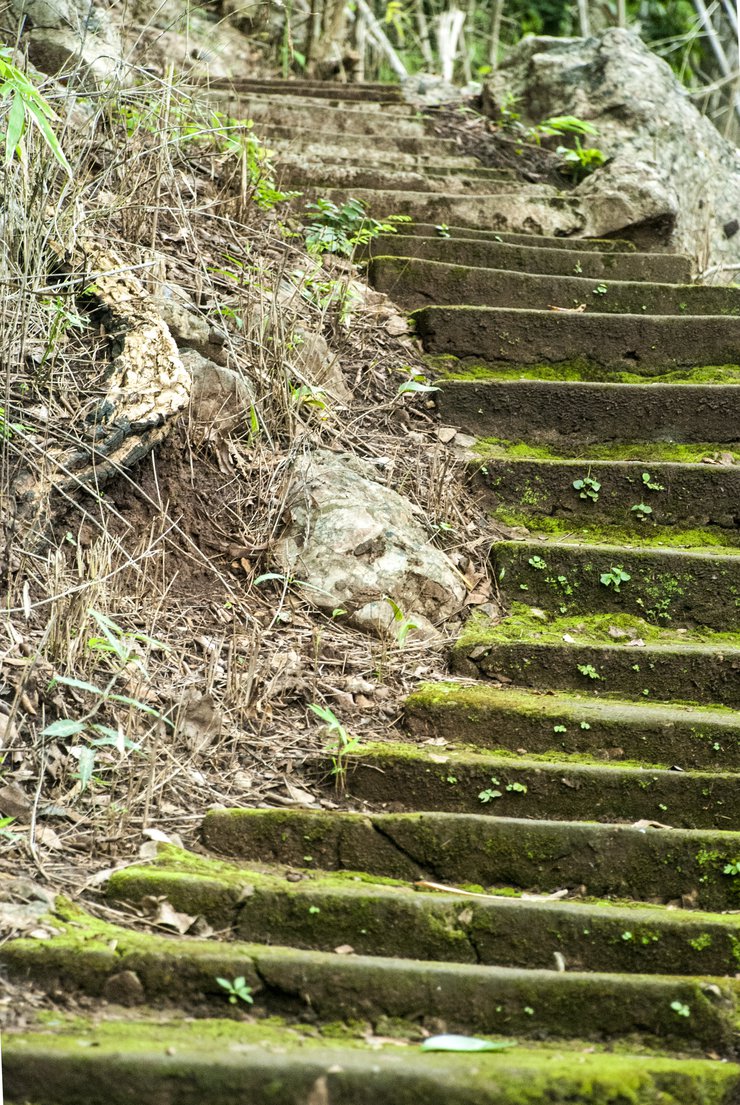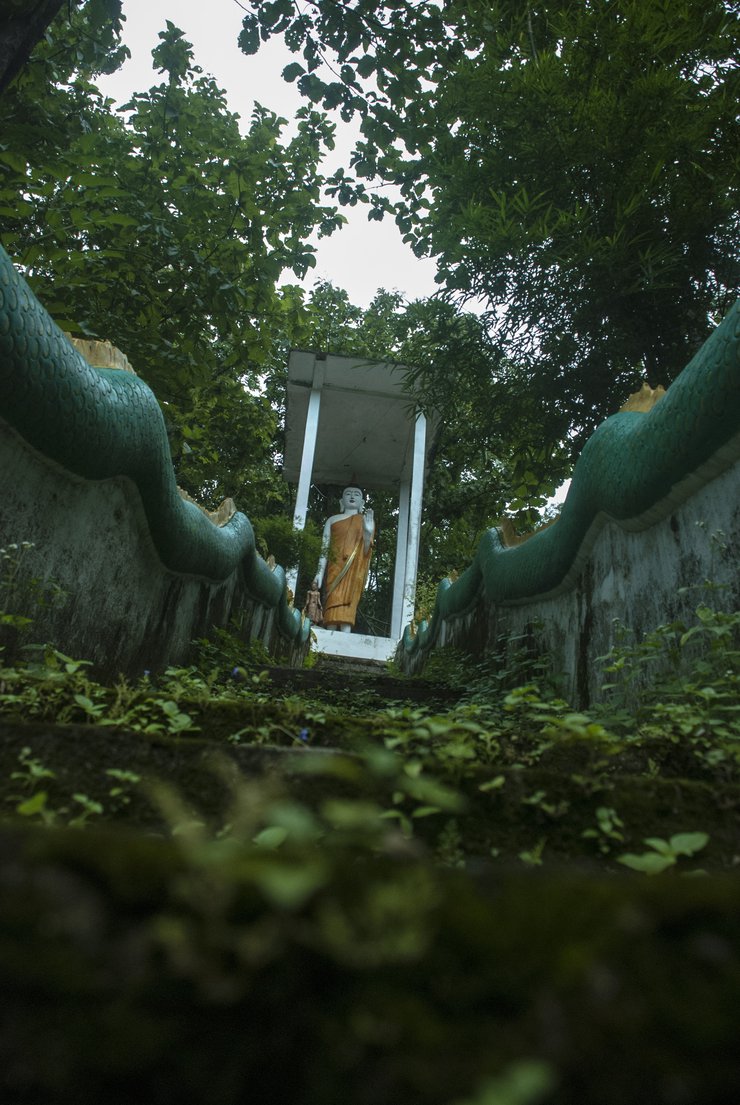
Those who love to make merit by carrying sand up to the temple, Doi Hin Kiew Pagoda, is another interesting option. -- Due to the terrain of the border area, the journey is quite difficult, but people with faith still flock to it continuously.
After agreeing that today we will gradually climb up with the children.

Doi Hin Kiew Pagoda is located in Ban Wang Takhian, Moo 5, Tha Sai Luat Subdistrict, Mae Sot District, Tak Province. It resembles the Kyaiktiyo Pagoda in Myanmar. Standing on the cliff edge, visitors can clearly see the Mae Nam Moei River and the Burmese side.

Standing on the cliff of Doi Hin Kiew, one can clearly see the Mae Sai River flowing into Myanmar. The name "Doi Din Chi" or "Din Ki" is believed to mean "brown soil like burnt or burnt by fire."

Reaching the Reliquary: A Steep Ascent
Reaching the sacred reliquary requires a challenging climb up 800 concrete steps, spanning 500 meters with a 30-degree incline. This steep ascent serves as a test of both lung capacity and knee strength. Ascend gradually, taking your time, and marvel at the dedication of those who have carried bricks and stones to the summit.
Journey to the Peak
The journey to the reliquary is not for the faint of heart. The steep climb demands physical exertion and unwavering determination. Yet, the reward at the summit is well worth the effort.
- Head towards Mae Sot District via Highway 105 (Tak-Mae Sot).
- Start at the Mae Sot checkpoint on the Thai-Myanmar border. Before reaching the checkpoint, you will encounter a three-way intersection. Turn right.
- Remember, you must pass Wat Thai Watthanaram and continue to the intersection near Ban Wang Takhian, where you will find a military checkpoint.
- Turn right and follow the road for approximately 3 kilometers. You will find the entrance to Phra That Doi Hiw Kiew on your right-hand side.
- The journey is not as difficult as you might think, and there are signs along the way.

Three ladies crossed our path at the starting point of the climb to the pagoda (we were gasping for breath).

Stepping into the Wat Phra That Doi Hin Kiew temple, you'll be enveloped by a serene atmosphere, as if surrounded by a sacred aura. It's an experience that defies description; you simply have to feel it for yourself.

On the right side of the path leading up to the Phra That, next to the large walking Buddha statue, is a 200-year-old ancient boat carved from a single tree trunk.
- The boat measures 126 meters in width, 13.35 meters in length, 0.52 meters in height, and 0.04 meters in thickness.
- The bow and stern of the boat are of equal length (approximately 1.20 meters).
- The interior of the boat has four compartments for inserting wood, which serve as seats and are spaced unevenly.
- Based on the shape and size of the boat, it is presumed that it was used to transport food or goods between the two banks of the Mae Nam Moei River.

The ascent gradually increases in steepness, but remains manageable.

We will find beauty like this.

Like this

Like this

And like this, oh wow, my eyes widened.

After a sweaty climb, we will find a resting pavilion. Here, there is a large Buddha statue for us to pay respect to. Opposite, the Khonghong and Klong caves.

The entrance to the Klong Cave and Klong Drum Cave during the rainy season is so humid that moss grows on it, which is truly amazing.

At this point, the path splits, leading to the area of the Buddha's Footprint and the Hin Kiew Chedi.
Here, I chose to go to the Hin Kiew Chedi, where there is a path that circles the chedi and leads to the Buddha's Footprint pavilion.

Upon reaching Doi Hin Kiew Pagoda, visitors will witness devotees offering prayers and seeking blessings from the sacred site.

A close-up view reveals the dazzling golden stupa perched on the cliff edge. This stupa is known locally as "Phaya Long," while the narrow rock passage is believed to be the "Hanging Pagoda of Indra."

A short, gentle path leads around the back to the replica of the Buddha's footprint, located approximately 100 meters from the stone chedi of Kiew.

We have arrived at the Buddha's Footprint Pavilion. What's great is that they offer free drinking water. Wow!

This symbol is definitely related to the Mon people.

After that, we took our time walking back down. Some say that going uphill is more tiring, but I disagree. 555.
The area around the Buddha statue in the Lilela posture has many interesting things, such as:

These are the flowers, incense, and candles that devotees have brought to worship.

This is a lotus flower.

And this is the doll, grandma, with a rope tied around it, forever and ever. Brrr!

We gradually descended along the path.
.
.
Note: The original text is empty, so the translation is also empty.
.
This sentence is in English and does not require translation.
.
Children have power.

Our American friend descended to the rest stop below, his face flushed red as if he had been deeply sunburned.
.
.
.
October 26, 2016
ginnagan
Friday, September 27, 2024 10:38 AM



















